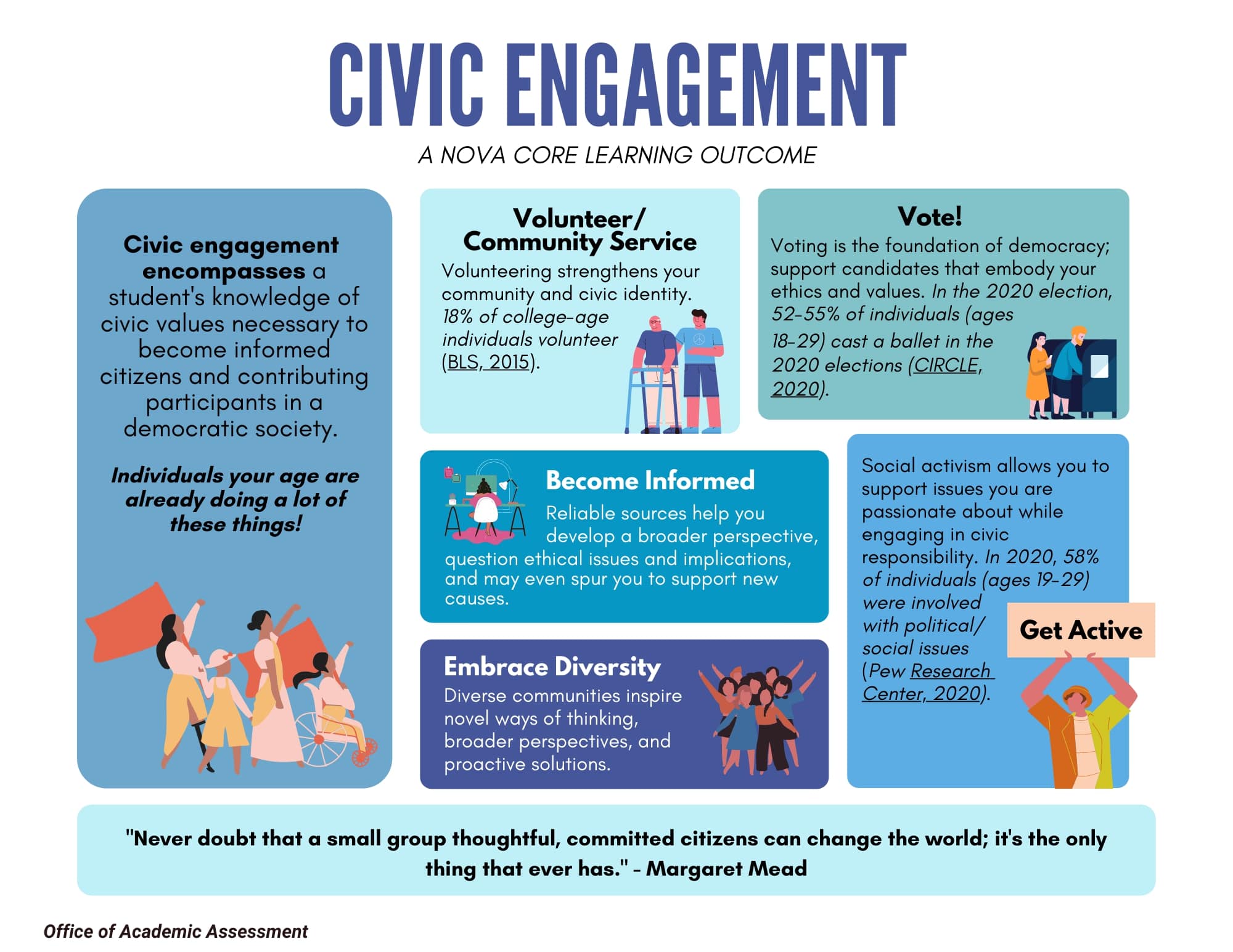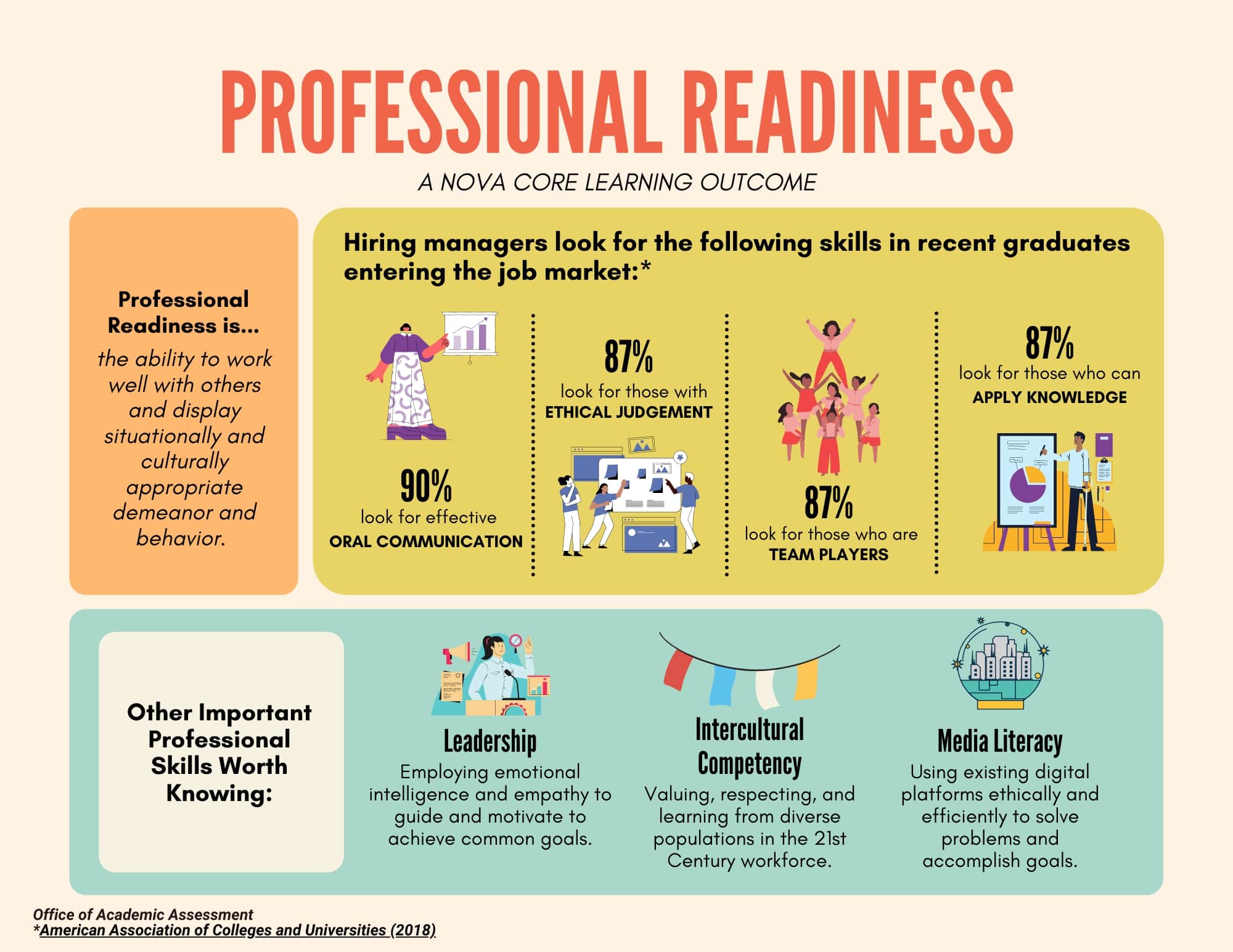
5,399 NOVA students participated in the 2018-2019 assessment of Civic Engagement. 3,635 students were assessed in 100-level courses while 1,764 students were assessed in 200-level courses. At the 200-level, 73.6% of students met or exceeded the set target scores while the 26.3% did not meet the set target scores. NOVA assessed civic engagement primarily as civic knowledge, civic responsibility, ethical reasoning and integrity, community diversity, and social justice.
Civic Engagement is a core competency for all public colleges and universities in Virginia, including NOVA. Belonging to a community is a central human need. Being engaged in your community means contributing at the local, national, and/or global scale. Civic Engagement demands an awareness of important events and debates related to your community at all levels (local, national, and global). Engaged individuals contribute to the civic life and well-being of their diverse communities. The following are aspects of Civic Engagement:1
Civic Perspective: Reflecting on and understanding one’s perspective and how it differs from others in the community helps us figure out how we fit into our community.
Civic Knowledge: Understanding the fundamental principles and debates concerning government, democracy, and citizenship at local, national, and global levels.
Civic Discourse: Discussing current concerns with community members to come to an agreement/position or determine a course of action.
Diversity in Civic Life: Recognizing that diversity is a key element in civic life due to the various feelings, perspectives, and life experiences that shape who we are and how we think.
Ethical Reasoning: Examining the ethical implications of community and civic actions and decisions.
Civic Responsibility: Considering and responding to civic, social, environmental, or economic challenges at all levels (local, national, or global).
Social Justice: Identifying personal and collective actions that could be taken to address injustices in society.
